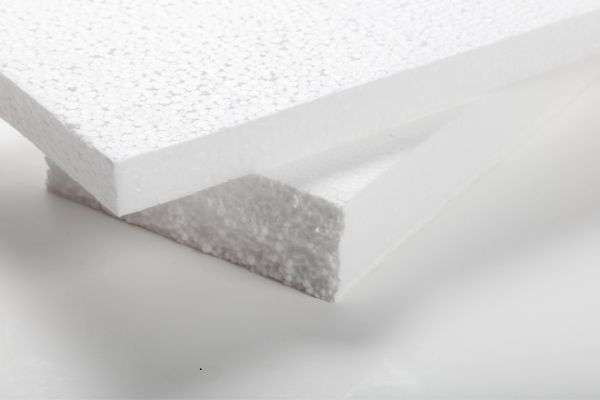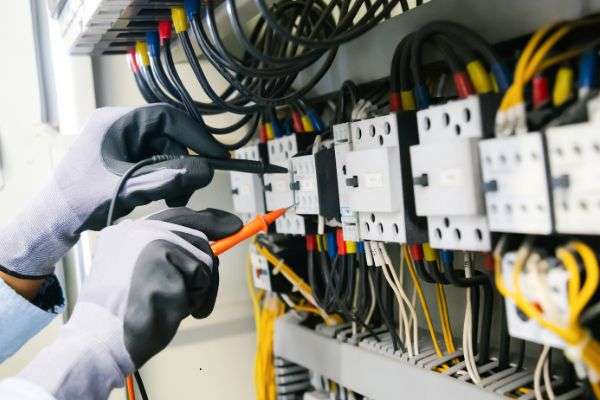Converting metal buildings into comfortable living spaces has become increasingly popular. Property owners discover that versatile metal building solutions offer exceptional flexibility for residential conversion. This transformation creates unique homes while maximizing existing structures.
Sarah purchased a 40×60 metal workshop three years ago. The building sat mostly empty except for weekend projects. Monthly storage fees drained her budget while her family outgrew their suburban home. She researched conversion options but felt overwhelmed by conflicting information. Contractors quoted astronomical prices without explaining the process. After months of frustration, she discovered systematic approaches that made conversion affordable. Her metal building now houses a stunning 2,400-square-foot home.
This guide reveals proven strategies for adding living quarters. You’ll learn essential planning steps and construction requirements.

Planning Your Metal Building Residential Conversion
Converting steel structures requires careful planning before construction begins. Every successful residential conversion starts with thorough assessment and strategic design decisions.
Evaluating Your Existing Structure
Your metal building’s current condition determines conversion feasibility. Inspect the foundation for cracks or settling issues. Check roof panels for rust or damage. Examine wall panels for dents or corrosion. Measure the building’s dimensions and ceiling height carefully. Document existing electrical and plumbing connections. Review the original building specifications and engineering documents. Professional structural engineers can assess load-bearing capacity for modifications. Most durable steel structures built within 20 years meet residential requirements. Older buildings may need reinforcement before conversion begins.
Understanding Local Building Codes
Building codes vary significantly between jurisdictions and municipalities. Contact your local building department before starting any work. Request specific requirements for residential conversions and occupancy permits. The building code requirements typically address egress windows and emergency exits. Fire separation between living and storage areas needs attention. Minimum ceiling heights usually require eight feet clearance. Electrical systems must meet current residential standards. Plumbing installations need proper permits and inspections. Some areas restrict metal building conversions entirely. Research homeowners association rules in deed-restricted communities.
Designing Efficient Living Space Layouts
Thoughtful design maximizes comfort within metal building constraints. Open floor plans work exceptionally well in rectangular structures. Position bedrooms along exterior walls for natural light. Locate bathrooms centrally to minimize plumbing runs. Create defined zones for living, sleeping, and cooking areas. Consider loft spaces in buildings with tall ceilings. Plan storage solutions throughout the living space layout. Account for HVAC equipment and mechanical system placement. Design flexibility allows future modifications as needs change. The Ultimate Guide To Customizing Metal Buildings For Any Use emphasizes adaptable layouts.

Essential Insulation and Climate Control Systems
Proper insulation transforms metal shells into comfortable living environments. Climate control systems maintain consistent temperatures throughout changing seasons.
Choosing the Right Insulation Materials
Insulation selection impacts comfort, efficiency, and long-term costs significantly. Spray foam insulation provides superior air sealing and moisture control. Fiberglass batts offer affordable installation between framed walls. Rigid foam boards work well for continuous exterior insulation. Reflective barriers reduce radiant heat in hot climates. Combination systems often provide optimal thermal performance results. Consider local climate conditions when selecting insulation materials. The energy efficiency standards recommend specific R-values by region. Professional installation ensures proper coverage without gaps. Quality insulation systems reduce heating and cooling costs dramatically.
Installing Effective HVAC Systems
Heating and cooling systems require careful sizing for metal buildings. Load calculations determine appropriate equipment capacity for comfort. Mini-split systems offer flexible zoning without extensive ductwork. Traditional central systems work well with proper duct design. Heat pumps provide efficient heating and cooling year-round. Radiant floor heating adds comfort in cold climates. Proper ventilation prevents moisture buildup and ensures air quality. Programmable thermostats optimize comfort while reducing energy consumption. HVAC systems represent significant investments in living comfort. Professional installation ensures warranty protection and optimal performance.
Managing Moisture and Condensation
Metal buildings face unique moisture challenges requiring proactive solutions. Proper ventilation prevents condensation between insulation and metal panels. Many opt for commercial-grade construction standards even for residential conversions. Proper ventilation removes excess humidity from living spaces. Dehumidifiers help control moisture in humid climates. Bathroom exhaust fans must vent completely outside the building. Kitchen range hoods need adequate capacity for cooking moisture. Monitor indoor humidity levels between 30-50% for comfort. Address any roof leaks immediately to prevent damage. Gutters and downspouts direct water away from foundations. Moisture control protects your investment and ensures healthy living.

Framing, Electrical, and Plumbing Installation
Interior build-out transforms empty shells into functional living spaces. Proper framing supports finishes while organizing mechanical systems efficiently.
Building Interior Wall Systems
Framing creates room divisions and supports electrical and plumbing systems. Steel studs resist warping and provide consistent dimensions. Wood framing offers easier modification for DIY builders. Leave appropriate gaps between frames and metal panels. Account for thermal movement in long wall runs. Frame openings for doors and windows precisely. Install blocking for cabinet and fixture mounting locations. Consider soundproofing between rooms with acoustic insulation options. Homeowners with protective steel shelters often expand into full conversions. The residential construction guidelines detail proper framing techniques. Quality framing ensures smooth drywall installation later. Many choose customizable building options with pre-engineered interior packages.
Running Electrical Wiring Safely
Electrical installation in metal buildings requires specific safety considerations. Use appropriate conduit types for protection against sharp edges. Ground all electrical components properly to metal structure. Install GFCI protection in bathrooms and kitchen areas. Plan sufficient outlets for modern electrical demands. Consider 220V connections for major appliances and equipment. Add exterior outlets for outdoor living spaces. LED lighting reduces electrical loads and heat generation. Smart home wiring enables future technology integration easily. Licensed electricians ensure code compliance and safety. Strategic design visibility helps homeowners showcase unique electrical features.
Planning Plumbing Rough-In
Plumbing installation works best before pouring concrete floors. Plan drain lines with proper slope for waste removal. Insulate water lines to prevent freezing in cold climates. Use PEX piping for flexibility and freeze resistance. Locate water heaters strategically to minimize pipe runs. Consider tankless systems for space and energy savings. Install clean-outs for future maintenance access needs. Pressure test all connections before covering with finishes. The indoor air quality recommendations address proper venting requirements. Quality plumbing installation prevents expensive repairs later.

Interior Finishes and Living Amenities
Final finishes transform construction zones into welcoming living spaces. Choose materials that complement the building’s industrial character beautifully.
Selecting Appropriate Flooring Options
Flooring choices impact comfort, maintenance, and overall aesthetic significantly. Polished concrete offers durability with modern industrial appeal. Luxury vinyl plank provides warmth without moisture concerns. Engineered hardwood adds elegance when moisture is controlled properly. Carpet creates comfort in bedrooms and living areas. Tile works exceptionally in bathrooms and kitchen areas. Consider radiant heating compatibility with flooring selections. Proper subfloor preparation ensures successful flooring installation. Account for thermal movement in large open spaces. Transition strips manage connections between different flooring types. Professional growth solutions help contractors expand into residential conversions.
Creating Comfortable Living Areas
Thoughtful design makes metal building homes incredibly comfortable and inviting. Natural light transforms industrial spaces into bright living areas. Window placement maximizes views while ensuring privacy needs. Ceiling treatments soften acoustics and hide mechanical systems. Built-in storage maximizes every square foot efficiently. Kitchen islands provide workspace and casual dining options. Interior Design Ideas for Custom Metal Building Homes inspire unique solutions. Paint colors dramatically impact the feeling of spaces. Lighting design creates ambiance for different activities. Personal touches make converted spaces feel like home.
Adding Modern Kitchen and Bathrooms
Kitchens and bathrooms require careful planning in metal buildings. Residential metal garages often include utility connections for easier conversion. Proper ventilation prevents moisture damage in these areas. Choose durable finishes that handle temperature variations well. Install quality fixtures for long-term reliability and satisfaction. Consider universal design principles for aging in place. Tile backsplashes protect walls while adding visual interest. Adequate storage keeps these spaces organized and functional. The structural steel specifications ensure proper support for heavy fixtures. Modern amenities make barndominium living truly comfortable. Professional builders enhance comprehensive market positioning through specialized conversion expertise.
Frequently Asked Questions
How much does it cost to convert a metal building into living space?
Conversion costs typically range from $30-80 per square foot. Basic finishes start around $30, while luxury finishes reach $80. Existing utilities and insulation significantly impact total costs.
Do I need special permits for metal building conversions?
Yes, most jurisdictions require building permits for residential conversions. Contact local building departments for specific requirements. Some areas have restrictions on metal building residences.
How long does a typical conversion project take?
Complete conversions usually require 3-6 months for professional crews. DIY projects often extend 6-12 months depending on complexity. Weather and permit timing affect project schedules significantly.
Can I finance a metal building home conversion?
Several financing options exist including construction loans and renovation mortgages. Some lenders specialize in alternative housing like barndominiums. Completed conversions may qualify for traditional mortgage refinancing.
What size metal building works best for living quarters?
Buildings 30×40 feet or larger provide comfortable living space. Ceiling heights should exceed 10 feet for best results. Consider future needs when selecting building size initially.


